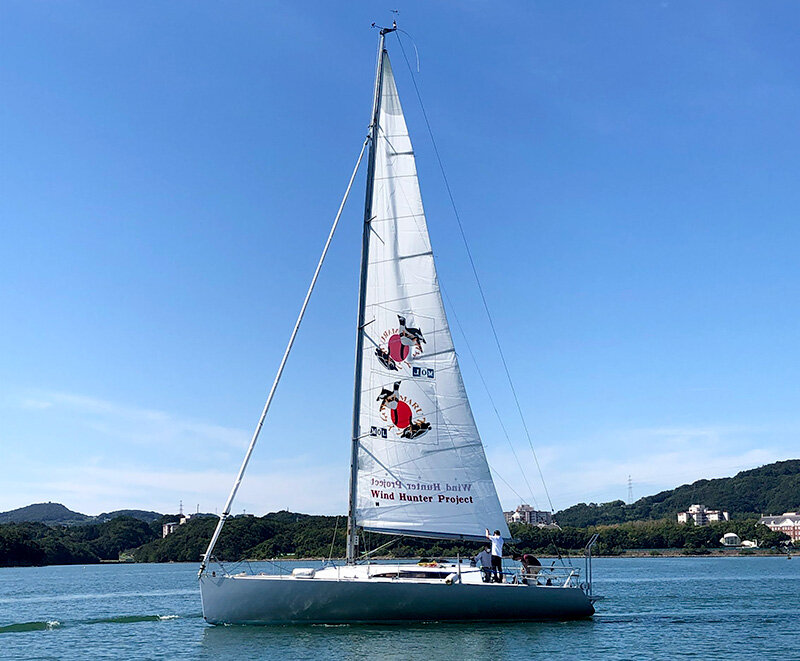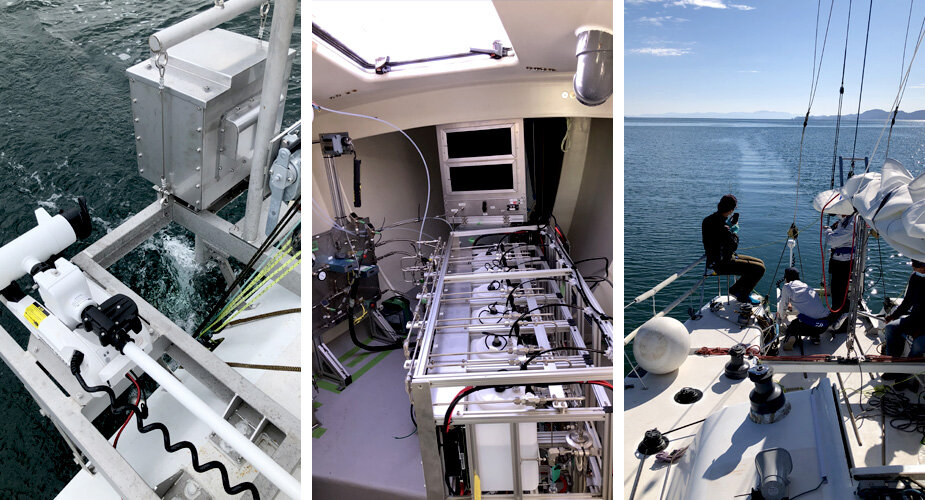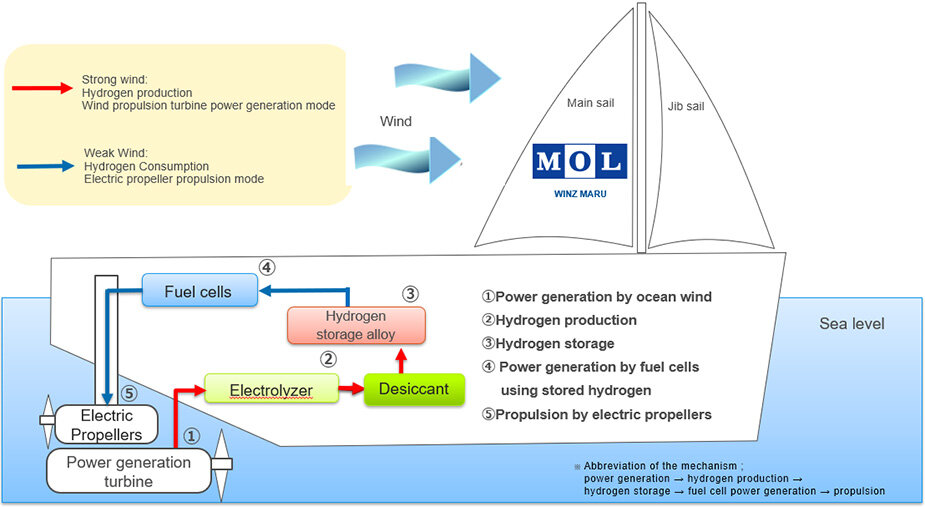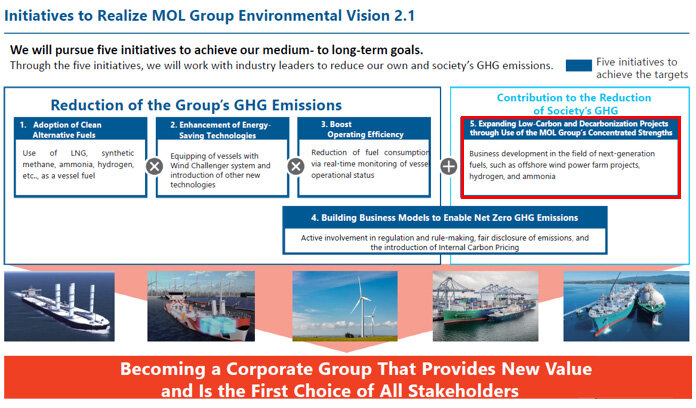- JP
- EN
"Wind Hunter Project" Zero Emission Ship Sailing by Wind and Hydrogen succeeded in the demonstration experiment by the Yacht "WINZ MARU"
December 09, 2021
TOKYO-Mitsui O.S.K. Lines, Ltd. (MOL; President & CEO: Takeshi Hashimoto ; Headquarters: Minato-ku, Tokyo) , together with Ouchi Ocean Consultant, Inc., the National Maritime Research Institute (NMRI) of National Institute of Maritime, Port and Aviation Technology (MPAT), Smert Design Co., Ltd., Graduate School of Frontier Sciences of The University of Tokyo, West Japan Fluid Engineering Laboratory Co., Ltd., Nippon Kaiji Kyokai (ClassNK), and Mirai Ene Planning LLC, have been promoting zero emission business utilizing wind power and hydrogen "Wind Hunter Project" (hereinafter referred to as the "Project") since last November (Note 1). Recently the Project successfully conducted a demonstration experiment using the yacht "WINZ MARU" in Sasebo-city, Nagasaki in Japan.

(If you click on the image above, you can see the video of the test sailing.)

Center: Inside of the hydrogen equipment room;
Right: A stern wake while propelling by hydrogen fuel cell with the sail lowered
During strong wind(red arrows in the image below), the yacht use wind power to generate electricity using a underwater turbine to produce and store hydrogen onboard. Durign weak wind(blue arrows), the stored hydrogen is used at hydrogen fuel cells to generate electricity to rotate a propeller. (Fig.1)
Five experimental sailings have been conducted as of November 24 2021 and series of cycles has been successfully demonstrated: (1) power generation by ocean wind → (2) hydrogen production → (3) hydrogen storage → (4) fuel cell power generation → (5) propulsion by electric propeller. At forthcoming full-scale sailing, we will accumulate and analyze navigation data in order to verify the actual performance characteristics of various equipment and the efficiency of the yacht (plant) itself and we aim to complete the demonstration experiment (Stage 1) by March 2022. As a future roadmap, we aim to create a larger scale, about 60 meters long vessel, by 2024 (Stage 2). Furthermore, we plan to develop and build much larger scale zero-emission vessel by 2030 (Stage 3).
(Fig. 1) Cycle of power generation → hydrogen production → hydrogen storage → fuel cell power generation → propulsion

MOL Group aims to achieve net zero GHG emissions by 2050, as set out in the "MOL Group Environmental Vision 2.1"(Note2). MOL will contribute to the reduction of GHG emissions and the realization of a low-carbon society by actively participating not only in the reduction of GHG emissions from MOL-operated vessels but also in the construction of clean energy supply chains, including this project. (Fig.2)
(Fig. 2)

(Note 1) November 30, 2020 press release:
"Wind Hunter Project" Starts -Zero-Emission Project with Wind Propulsion and Hydrogen-
(Note 2) MOL Group Environmental Vision 2.1
https://mol.disclosure.site/en/themes/101

